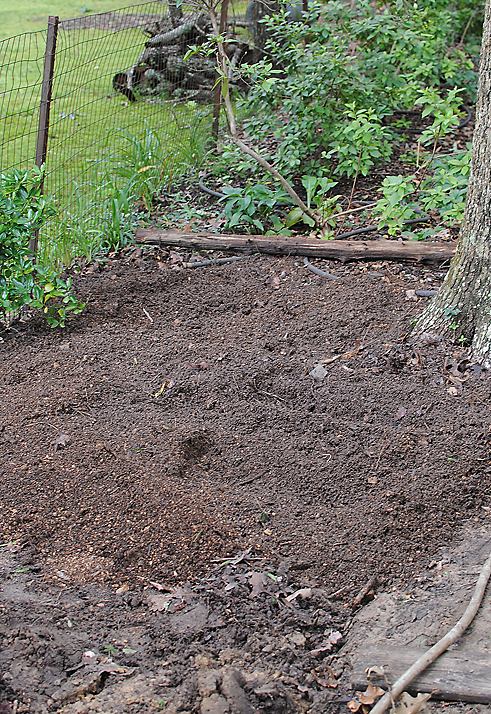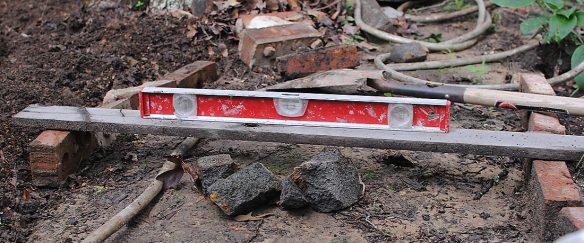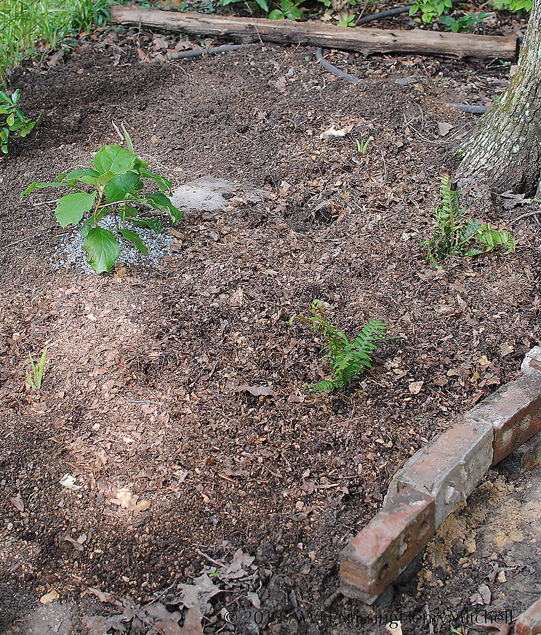Gardeners are always being made to cope with some disaster or another. If it isn’t rain, such as we have had virtually nonstop since March, then it’s impossible drought or hailstorms or drying winds or plagues of locusts. Weather happens; we must get on with it.
So, despite a brief rain on Sunday (see previous comments about not working the soil when it’s wet), I made progress on my pathway garden. As before, I cleared the area–perhaps another 10 or 12 feet in length alongside the property-line fence–and hauled in soil amendments. This time, I treated the area to some moldering sawdust from the tree we removed in early May (in preparation for the house addition that it has been too damp to build), then a generous layer of the manure-grit mixture. A careful till and smooth-over with the rake, laying and leveling the brick edging, and I was ready to plant.
The plants
I installed another Hydrangea paniculata ‘Snowflake,’ a variegated Fatshedera lizei ‘Aureosomething’ (the tag, of course, is in the shed), perhaps two dozen or so displaced crocus and daffodil bulbs, and three Disporopsis perneyi, or Asian fairy bells. The Disporopsis were an impulse buy, a kind of horticultural checkout counter Toblerone. The evergreen foliage looks like that of Tricyrtis, another shade plant I love but which my voles apparently love more. I hope the Disporopsis‘s stiff vertical form will contrast nicely with the floppy, broad foliage of the hydrangea, and perhaps blend gracefully with the Fatshedera which I intend to cover the fence. As I mentioned before, in my mind it looks fantastic.
And, hoping that very late is better than never, I transplanted some winter-sown seedlings of Anemone virginiana and Mitella diphylla. The pathway may prove too damp and shaded for the anemones but I expect this site is marginally better than the milk carton in which they were growing sitting. If they do want more direct light than they’ll get here, I’ll move them to the white garden, but that bed expansion is further down on the to-do list. The mosquitoes back there are the size of hummingbirds, I swear.






